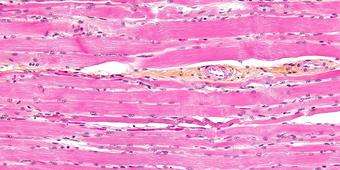Using evolution to identify cell types

Despite similarities in form, function, and even DNA, cells that appear to be related may have traversed very different evolutionary paths. Science magazine spotlights a new approach to identifying cell types based on a recent working group at SFI.
Biologists convened at the October "Cell types and Cell Type Origination" working group to discuss "a different, more reliable concept" for classifying cells, as systems biologist and group participant Stefanie Widder is quoted in Science. The group was organized through a collaboration between the Santa Fe Institute and Arizona State University's Center for Biosocial Complex Systems.
Instead of taking the traditional approach of typing a cell based on its structure, function, or location within an organism, the group took an evolutionary approach to classification, which focused on gene expression patterns that reveal which parts of a cell's genome are active. These distinctive patterns of activity can point to differing evolutionary origins in apparently similar cells.
The Science article offers examples of classifying similar-seeming cells within the human brain and reproductive tract; delineating disparate evolutionary histories of neurons within a single nervous system; and figuring whether similar cells across species, such as striated muscle cells in vertebrates and cnidarians (jellyfish), indicate "evolutionary connectedness."
The working group participants are writing a synthesis paper that will clarify how to understand cells through gene expression patterns and the advantages of such an evolutionary approach.
More information: E. Pennisi. Using evolution to better identify cell types, Science (2015). DOI: 10.1126/science.350.6261.618
Journal information: Science
Provided by Santa Fe Institute



















